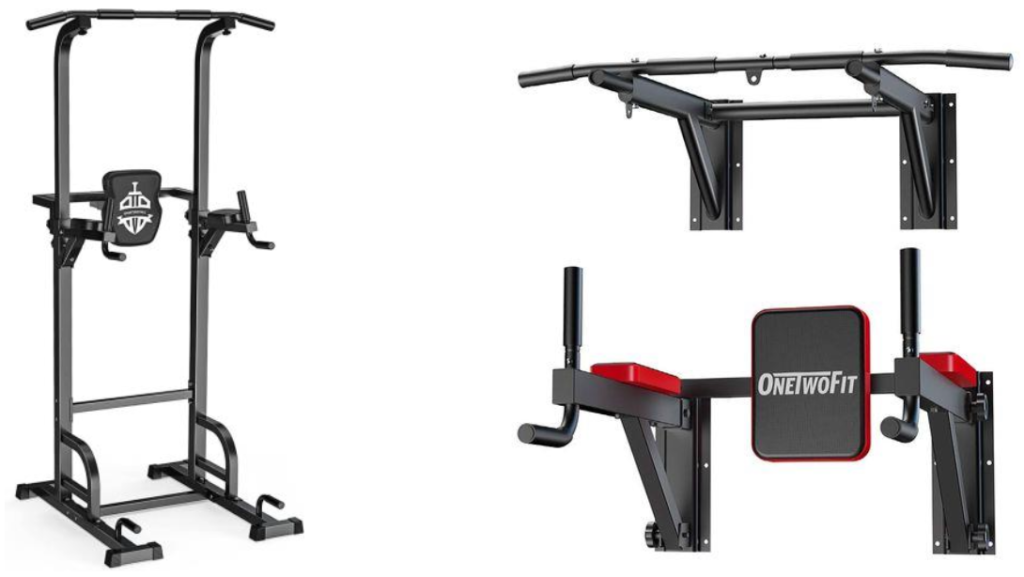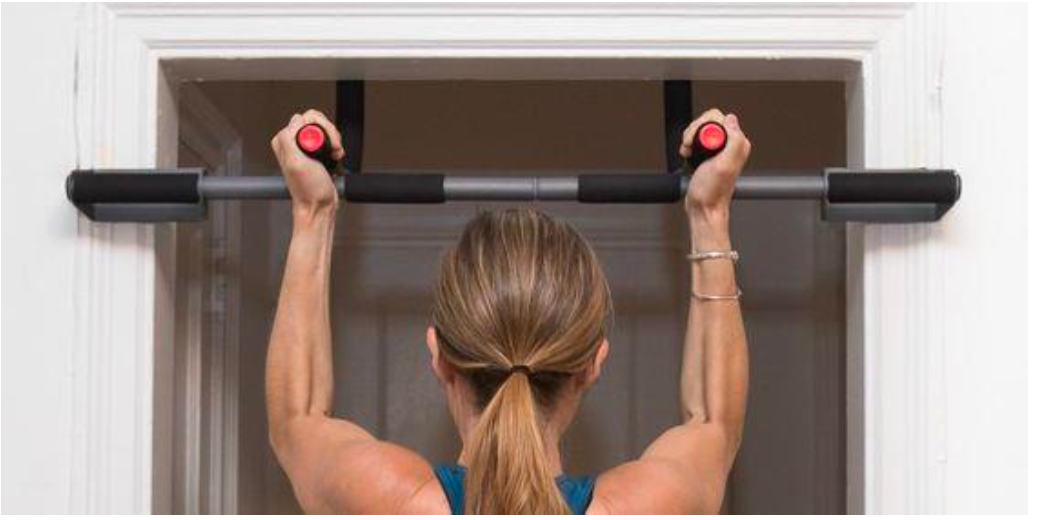“Beyond the Bar: Sculpting Your Strongest Self with Pull-Up Bar Mastery— Discover the Best Gear, Techniques, and Training Wisdom to Reach New Fitness Peaks”

In the realm of bodyweight exercises, few movements rival the simplicity and effectiveness of pull-ups. These powerhouse exercises not only sculpt a strong upper body but also engage the core, making them a cornerstone of any fitness routine. In this guide, we’ll explore the importance of pull-up exercises, the benefits of having a pull-up bar at home, the various types of pull-up bars, their advantages and limitations, workout routines, features to consider when buying, and crucial installation and safety tips.
Unlocking the Power of Pull-Ups
i. Introduction to Pull-Up Exercises: Pull-ups are a fundamental compound exercise that targets multiple muscle groups, including the back, shoulders, arms, and core. They are renowned for building upper body strength and promoting overall fitness.
ii. Benefits of Having a Pull-Up Bar at Home: Imagine having a gym-quality workout station in the comfort of your home. A pull-up bar offers just that, providing a range of benefits such as convenience, accessibility, and the ability to perform an array of challenging exercises without the need for extensive equipment.
Types of Pull-Up Bars
i. Door-Frame Pull-Up Bars:
- Advantages and Limitations: Door-frame pull-up bars are compact and affordable, making them an excellent choice for home use. However, they have weight limitations and may not be suitable for heavier users.
- Installation and Safety Tips: Proper installation involves securing the bar tightly in the door frame. Ensure the door frame can support your weight, and follow the manufacturer’s guidelines for safe usage.
ii. Wall-Mounted Pull-Up Bars:
- Sturdiness and Durability: Wall-mounted pull-up bars are known for their sturdiness and durability. They are securely anchored to the wall, providing a stable platform for intense workouts.
- Considerations for Installation: Professional installation is recommended to ensure proper anchoring. Choose a location with sufficient space and consider the height and grip options available.
iii. Freestanding Pull-Up Bars:
- Portability and Versatility: Freestanding pull-up bars offer portability and versatility. They are suitable for outdoor use and can be moved to different locations as needed.
- Pros and Cons Compared to Other Types: While freestanding bars offer flexibility, they may lack the stability of wall-mounted options. Consider the trade-offs based on your workout space and preferences.

Benefits of Pull-Up Bars
i. Upper Body Strength Development: Pull-ups target the latissimus dorsi, biceps, and other upper body muscles, promoting strength and definition.
ii. Core Engagement and Overall Fitness: The hanging motion of pull-ups engages the core, promoting stability and contributing to overall fitness.
iii. Convenience and Accessibility for Home Workouts: Having a pull-up bar at home eliminates the need for a gym membership and allows for quick and efficient workouts, making fitness more accessible.
Pull-Up Bar Workouts
i. Basic Pull-Up Variations: Explore different grip variations, such as wide grip, chin-ups, and neutral grip, to target various muscle groups.
ii. Additional Exercises and Routines: Enhance your workouts with additional exercises like hanging leg raises, knee raises, and muscle-ups. Create routines that challenge both strength and endurance.
iii. Tips for Beginners and Advanced Users: Beginners can start with assisted pull-ups or negative pull-ups to build strength gradually. Advanced users can incorporate weighted pull-ups for increased resistance.

Features to Consider When Buying a Pull-Up Bar
i. Material and Build Quality: Choose a pull-up bar made from sturdy materials like steel for durability and longevity.
ii. Weight Capacity and Stability: Check the weight capacity to ensure it can support your body weight. Stability is crucial for safe and effective workouts.
iii. Adjustable vs. Fixed Options: Adjustable pull-up bars offer flexibility in grip width, allowing for a variety of exercises. Fixed options are more straightforward but may be sufficient for many users.
Installation and Safety Tips
i. Proper Mounting Techniques: Follow manufacturer guidelines for installation, ensuring secure mounting. Use appropriate tools and hardware for the specific type of pull-up bar.
ii. Regular Maintenance and Safety Checks: Periodically check for loose screws, wear, or any signs of damage. Maintain a secure and stable setup for safe workouts.
iii. Common Mistakes to Avoid: Avoid overloading the bar, performing jerky movements, or neglecting proper form. These mistakes can lead to injuries or damage to the equipment.
In summary, a pull-up bar is a versatile and effective tool for anyone looking to elevate their fitness journey at home. Whether you opt for a door-frame, wall-mounted, or freestanding option, the benefits of incorporating pull-ups into your routine are immense. Explore the world of pull-up bars, select the one that aligns with your needs, and embark on a transformative fitness journey. With the right pull-up bar, you’re not just investing in equipment – you’re investing in a stronger, healthier version of yourself.
Also Read –
- What is a Surge Protector?
- Advantages of USB Phone Chargers
- How Wireless Chargers Work?
- How to Choose a Yoga Mat?
- Key Features of Wallet Purse Organizers
For New Product Reviews, Buying Guides, Visit BareFootClimb




![Snapchat Spectacles (5th Gen) [Top Features Unveiled] [2024] Snapchat Spectacles](https://barefootclimb.com/wp-content/uploads/2024/10/Snapchat-Spectacles-150x150.jpg)







2 thoughts on “Top Features to Consider When Buying a Pull-Up Bar”